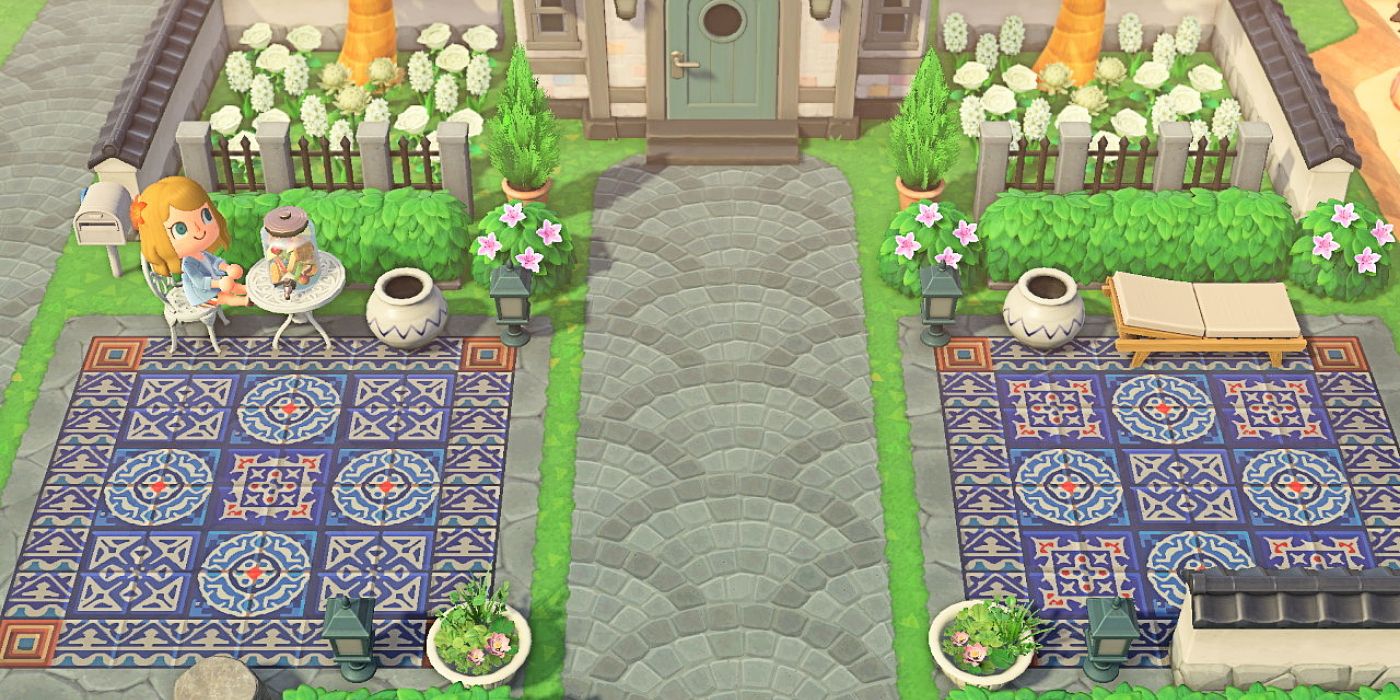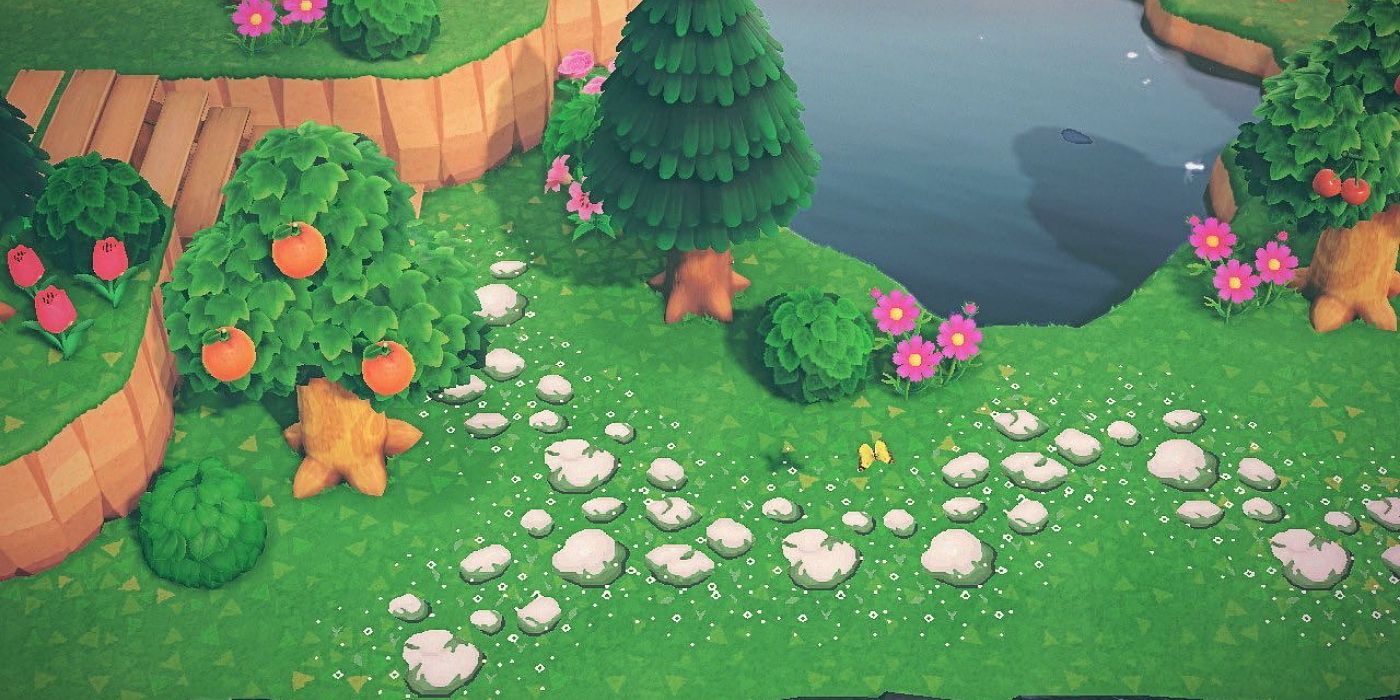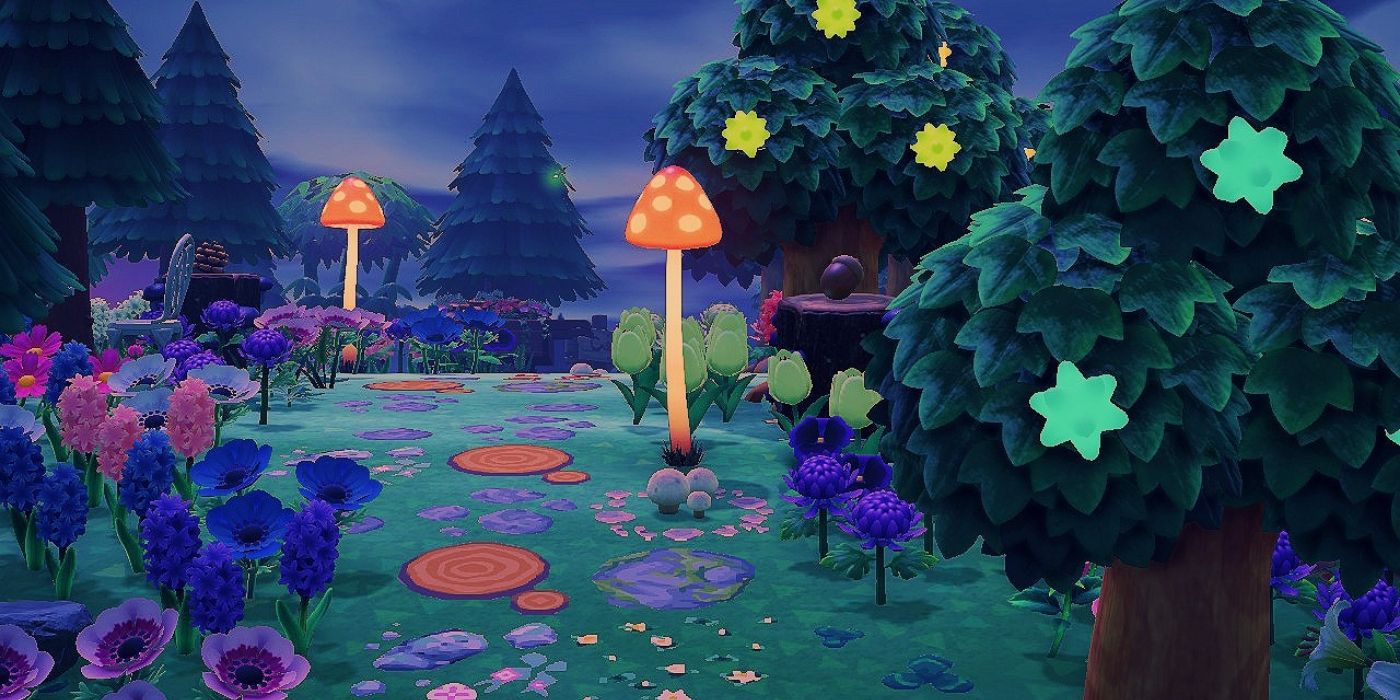Animal Crossing: New Horizons amps customization up a notch by allowing players free reign to design their perfect island getaway — from terraforming cliffs and waterscape to land reclamation, zoning, demolition and relocation, home decor, and urban redevelopment. In New Horizons, more is best, as in it’s better to have too much of one thing than too little of everything. Nintendo’s ambitious next-gen touch-ups ensure nothing about Animal Crossing is beyond imagining; as long as it’s empirical, it could probably be done.
Pathway construction is one such novelty that has seen far more upgrades than anything else on Animal Crossing. The feature was met with much fanfare when it was introduced in Animal Crossing: New Leaf, but it wasn’t anything to brag about just yet. Attempts at customization were promising, but it wasn’t until the Switch was introduced that expansions could really get going. New Horizons enables players to not only lay down concrete, so to speak, but also customize as necessary. Like everything else in the game (aside from house design and fences), players may craft their own patterns from scratch using the Custom Designs app on the NookPhone and share via ID or QR code. Once your NookPhone is upgraded (post-K.K. Slider) to include the Island Designer app, players can redeem path designs using Miles on the NookStop, including the “custom design path permit” for 2300 Nook Miles. There are 7 pre-made path designs in all: arched tile, brick, dark dirt, sand, stone, terra-cotta tile, and wooden.
Paths are commonly used to create walkways, pavements, and roads around your island, to designate which areas could be explored on foot, and which are off-limits. The feature is especially useful when having visitors around. Creating walkways keeps visiting islanders from trampling on flowers and wandering elsewhere they aren’t welcome. It’s basically simple gardening. But is that all paths are good for? To carve out lanes and improvised road studs for equal parts flourish and pragmatics? To separate streets from shrubbery? Is there another, more creative, way to utilize these paths to create the perfect island?
The short answer: yes. Like everything else in Animal Crossing, it’s not about what you have, it’s about how you use what you’re given that matters.
Tiling Properties on Animal Crossing: New Horizons
Erecting buildings from scratch is a life simulation perk that hasn’t hit Animal Crossing yet. While the player’s home enjoys limited customization options — and a roof! — all free-standing properties on New Horizons are pre-designed for each villager and (in the case of island facilities) owner. In other words, they can’t be altered. If Groucho’s punk-rock home or Plucky’s tropical hut is aesthetically displeasing to you, your only choice is to stick with it or replace that villager with someone with a more complementary pad.
It’s not possible to put up your own buildings either. But it doesn’t mean players can’t have the next best thing: open-air establishments. Animal Crossing: New Horizons encourages players to carve out wide spaces on their island expressly for public use, but since it isn’t possible to create buildings with roofs, most workarounds involve only outdoor establishments, like parks, concert halls, picnic glades, tulip fields, town squares, and marketplaces. These areas are normally brimming with vegetation: trees, flowers, and crops. But say you want something more — hospitals, pharmacies, restaurants, gyms, hotels, offices, clinics, arcades, even places of worship — there is a way to utilize paths for this very purpose. This is where custom designs come in.
Since New Horizons was released, players have managed to customize almost every path pattern known to man and fiction, anything from fairytale mushroom-loaded paths, to stepping stones, flower patches, and sea floors. What you need, however, are tiles, not more outdoor paths, and besides bricks, stones, terra-cotta, arched, and wood, there are numerous other custom choices you can use to tile your open-air buildings. Want sparkling white tiles to go with your hospitals, clinics, drugstores, and offices? What about shiny wooden floors and worn flagstone tiling for inns, bars, and certain places of worship? What about a makeshift stadium? Swimming pool? Tower deck? Playpen? Dusty train stations? Zoo? More glittery, semi-darkened spaces for open mic bars, saloons, movie theaters, and video arcades? Something simple for a makeshift shop or street food stall? An ornate pattern for a royal ballroom, and a jester court? If you can get past not having a roof, you can erect anything your heart desires just by manipulating paths however way you need. Again, if you can imagine it, it probably exists. Do a thorough search online for custom tile designs. You’re bound to come across hundreds, many of which are sure to fit your complex architectural needs. You can’t use pre-made, in-game flooring for tiling use, however, so stick to custom path designs for more variety.
Are you looking for more suitable walls to go with your pseudo-closed structures? If fencing doesn’t satisfy your cravings for consumer-based interior design, try using custom patterns and pre-made wallpaper on simple panels — the perfect workaround for anyone looking to customize public properties further. If you’re looking to conserve space by adding extra floors — basically the closest thing to a towering building — use cliff construction to add that second and third (maybe even fourth!) floor, which you can then customize with their own tiles, simple panels, furniture, and fencing. Experiment. Custom and pre-designed bridges could also be used to improve preexisting establishments, like that one stone bridge overlooking the river in a monastery far right of your island. Pro-tip: make sure to lay down a tile before erecting a fence or a simple panel on top of it, so the tiling covers the whole structure. This only works for fencing and furniture, though. If you try building an island home over any combination of paths, the terrain directly below will automatically be converted to grass. It's also not possible to overlap two different tiles unless a semi-transparent custom design allows it; unfortunately, there will often be a small patch of grass in between conflicting paths.
There’s no reason to avoid typically closed spaces just because Animal Crossing doesn’t come with an adjustable roof. Open-air spaces serve the same purpose, and your villagers will flock to them anyway, perfectly happy, and at ease.
Customizing Your Island’s Theme on Animal Crossing: New Horizons
Most Animal Crossing islands these days follow an overarching architectural theme, from sprawling urban cities, tropical pirate utopias, and space stations, to medieval fishing villages, walled Meiji-era Japan, rural Ireland, Greco-Roman agora, and Ancient Egypt. Some players have managed to replicate even fictional locations, like Hogwarts, Konohagakure from Naruto, Asgard, Gotham, Silent Hill, Pokemon, Avengers Compound, and the Mushroom Kingdom from Mario. Some prefer a humble taste of home and create completely unique islands inspired by the places they live in, in real life.
Not everything is readily at arm's reach, but players have proven time and again that improvisation is key to building the ideal island, not so much what is freely available and what is not. Silos, for instance, are typically used to decorate farmlands, but they could, conversely, serve as towers for medieval European villages as well, the sort used to flank a drawbridge, which could also theoretically be constructed using a mixture of waterscaping and custom bridge design. Paths are of course just as malleable. Whatever the style or theme, most of these can be made possible by the right combination of paths, terraforming, and furniture, but tiling most especially.
Personalizing an entire island starts with something basic and simple: changing its terrain. If you’re hoping to create the optimal desert paradise — think Ancient Egypt or Tatooine — sand paths are the way to go. If you’re aiming for a medieval city — think Lord of the Rings, Harry Potter, or England during the Middle Ages — overload on brick, stone, and dirt paths. Dirt paths usually go on residential areas, while brick and stone often match most medieval marketplaces. What about replicating modern-day Shibuya, in Japan? Chinatown, Paris, New Delhi, or Shanghai? The heart of New York City? If you’re looking to create more urbanized islands, search for custom road and street paths like pedestrian lanes, bike paths, and highways that come with road lights. But if your tastes are larger than life and less mundane — perhaps you’re aiming to create an island duplicate of Atlantis or the rainbow-colored Bifröst from Asgard — there’s always a custom path available to match more sophisticated aspirations. Anything from paths that mimic underwater flora, to sky-bound tiles that make it seem like you’re floating on air — custom designs for whatever you need probably exist already. If you're not sure which paths are best suited for a particular theme or a specific part of the island, reference images can easily be Googled online or searched on Pinterest.
Animal Crossing thrives best when players are willing to improvise to achieve the results they desire. If you're lacking in something, whether in items or available designs, strategize. Be creative. Focus on workarounds, not limitations. When terraforming or using any particular in-game feature, try not to ask yourself, "What is this for?" Don't box yourself that way. Animal Crossing has open boundaries (and flexible rules) for a reason. Instead, think, "How else can I use this to suit my very specific needs?" New Horizons literally encourages players to tear down barriers, trap large acres of water, and craft hulking furniture from a few pieces of wood and iron, in the quest to create the crème de la crème of all islands. It features flightless birds piloting seaplanes, taking charge of the skies, and an enterprising raccoon that somehow built a corporate empire from ground zero. If you stop every time you hit a wall, then maybe it's time to relocate to a getaway package with fewer sandbox opportunities. Otherwise, embrace island life. Animal Crossing is your oyster.
Animal Crossing: New Horizons is available on the Nintendo Switch.



